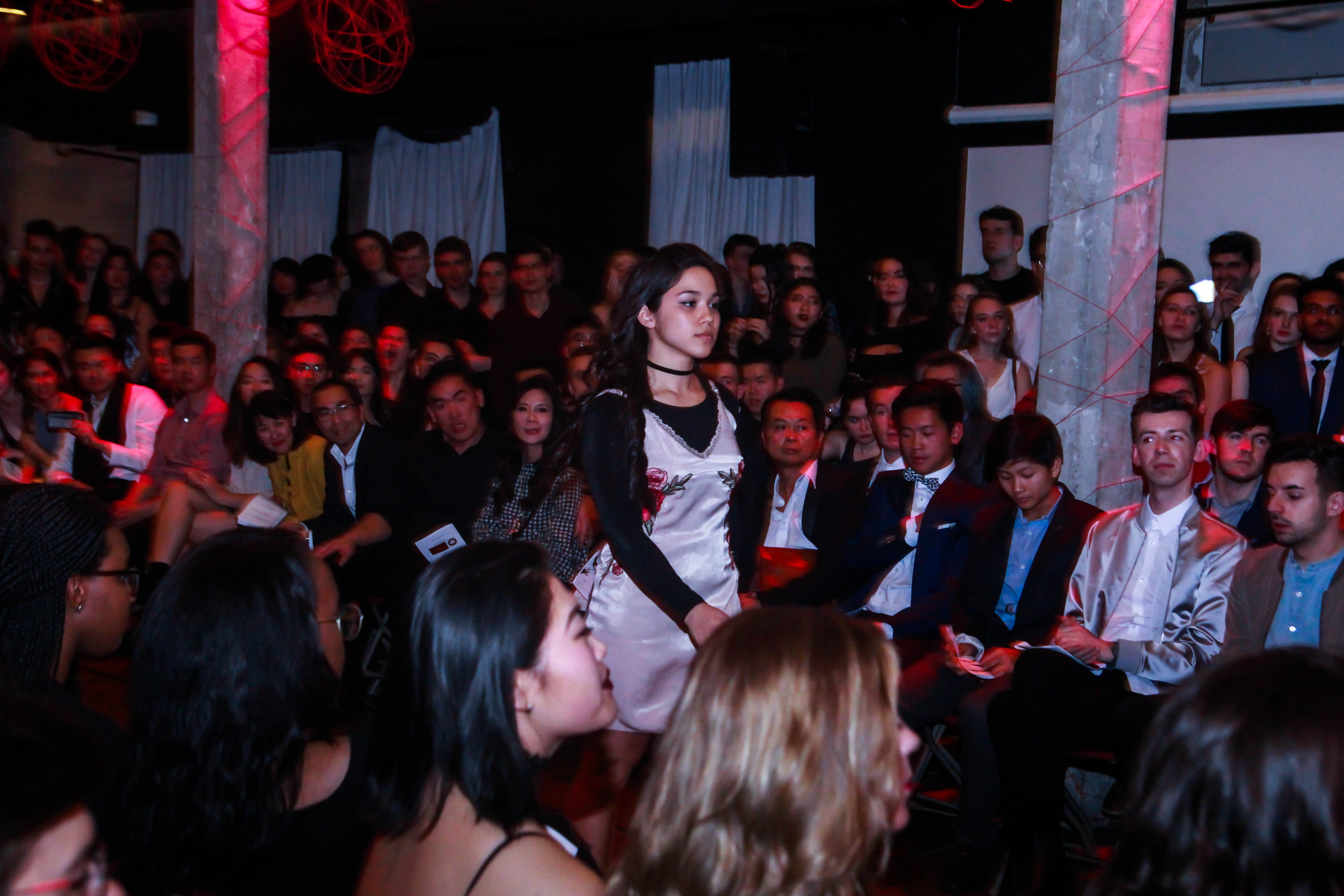The fact that McGill is perpetually under construction seems to have little effect on students’ street style: it’s not uncommon to see a bold fur coat, on-trend mermaid hair, or an effortlessly styled edgy outfit amidst and despite the debris. However, it seems that fashion exists on the periphery of McGill’s artistic scene, with more on-campus clubs and groups devoted to creative writing, visual art, and music. McGill’s fashion week (McFW), however, is the perfect occasion to get to know the well-dressed people whose aesthetic you admire in the hallway through a series of shows that celebrate local designers and fundraise for important causes. This year, McFW featured three fashion shows: SYNESTH/ASIA’s “Legends,” Med/Dent’s ANEB “Unmask,” and P[H]ASSION’s “Spectrum,” with each event showcasing different facets of Montreal’s fashion scene. Both “Legends” and “Unmask” placed an emphasis on local designers, even displaying the creations of several McGill students.
“Legends”
On March 24, SYNESTH/ASIA took over the minimalist gallery space at Le Livart. The event’s charitable focus was made clear at the outset: the showcase began with a silent auction, with all proceeds from the art sales – all items were made by Montreal and McGill artists – going towards the organizations Pencils of Promise and the Canadian Red Cross. When asked about the primary goal of SYNESTH/ASIA, Josh Marchesini, the group’s Communications Exec, answered “raising money for alleviating poverty and sustainable development in Asia.”
“Legends” is based on the myth of the red string of fate. According to this Asian legend, people are linked together across time and space by the gods who bind those who are destined to meet each other by an invisible red string. “You are connected to someone in the world, no matter what. That string will never break,” explained Marchesini, adding that the theme also served as an invitation to the audience to “find your connection with [SYNESTH/ASIA].” This theme was reflected throughout the event, whether in the red strings tied around the pinkies of the models and volunteers, or the incorporation of red string into the event’s décor. As SYNESTH/ASIA Director Sophie Buu put it, the motif aimed to“engage the guests rather than just watching a clothing line.”
When asked to describe the aesthetic of the show, Buu referred to it as “definitely chic.” The event’s polished aesthetic was seen in their contemporary take on the signature little black dress, showing off skillful yet playful tailoring, and ubiquitous cut-outs. Some of the fashion highlights of “Legends” were the glamorous sequined mini-dresses, lingerie-inspired satin eveningwear featuring embroidered sides, and eye-catching statement accessories like spiked ear-cuffs and chokers.
Some of the pieces featured a nostalgia for the past, but were paired with an energy that was undeniably contemporary.
“Legends” was not simply a fashion show; the event also incorporated various forms of art, combining the traditional runway walk with elements of dance. As SYNESTH/ASIA director Emily Bremner noted, the models’ choreographies were “poses and intricate movement rather than complete dancing […] hip-hoppy, pop.” Dance performances were also weaved in between segments of the fashion show, including a intricately choreographed number from the Mosaica Dance Company, and an energy-filled dance from 2KSquad.
“Unmask”
The Med/Dent fashion show, held on March 25, chose the edgy Entrepot Dominion for their venue: a building that used to be a historic textile factory, but has been remade into an industrial-chic event space. Like SYNESTH/ASIA, “Unmask” centred their show around their cause. A series of speakers, such as representatives from Anorexia and Bulimia Quebec (ANEB), presented on the topic of eating disorders; there were also touching and powerful testimonial from those who had struggled with eating disorders.
When asked to elaborate on the show’s title, David-Dan Nguyen said “our event has a double meaning behind it,” and that they aimed “to make people feel confident” within a society that fosters eating disorders through impossible standards about “beauty.” Nguyen went on to say that “the mask is easily put on. It’s easy to hide who you actually are and conform to what other people want. The idea was to unmask that and also to unmask the stigma behind talking about these issues.”
According to this Asian legend, people are linked together across time and space by the gods who bind those who are destined to meet each other by an invisible red string.
With a ‘streets meets classic’ aesthetic, one of the show’s directors, the style of “Unmask” was an apt reflection of the current fashion trends. Urban athleisure mingled with 90s revival components and the occasional nod to 70s fashion. Some of the pieces featured a nostalgia for the past, but were paired with an energy that was undeniably contemporary. Some standouts were WTFash’s modern reinterpretation of the 70s crochet dress, Kantine’s playful homages to Montreal’s foodie culture and Velvet Couture’s experimentation with unique textures and unexpected tailoring. Monsieur Phoenix’s dapper ties (whose profits go towards ANEB) were the favourite pieces of show directors Nguyen and Sarkis.
